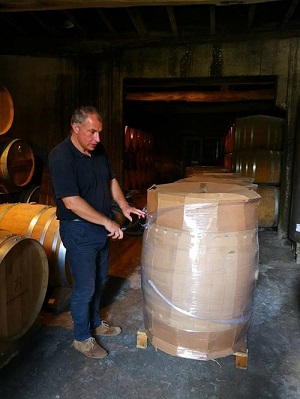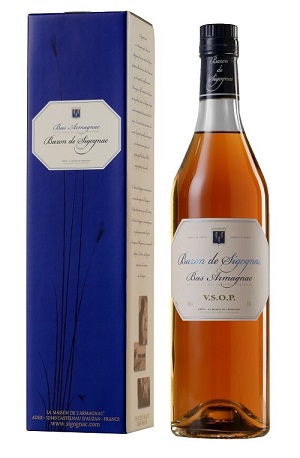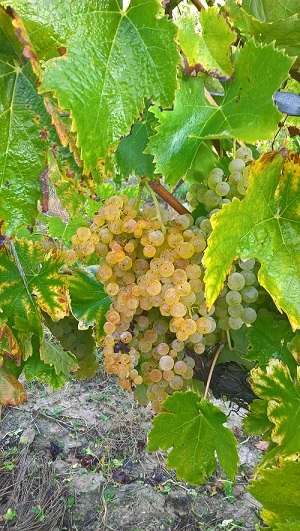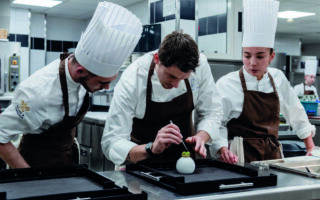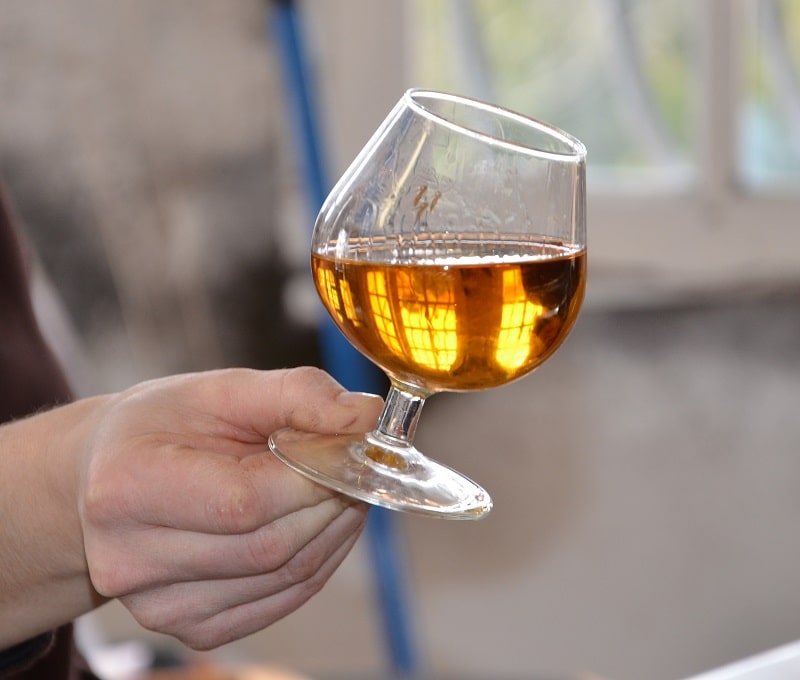
The Big Interview: Baron de Sigognac Armagnac
Pour yourself a glass of something special, settle down in your favourite armchair and enjoy our tête-à-tête with Thomas Guasch and Jérôme Castledine from acclaimed craft Armagnac distillery, Baron de Sigognac, one of the oldest and most magical of the Armagnac houses…
This is very much a family business – how long have your family been making Armagnac?
Jérôme: The Guasch family has been distilling Bas-Armagnac specifically at Château de Bordeneuve since 1974. However, Armagnac production at the domain dates back several hundred years and eau-de-vie production to the medieval period.
How many of the original methods and traditions do you still use today?
Jérôme: The short answer is as many as possible. We grow traditional Armagnac varietals (Baco and Ugni Blanc), which, historically, are perfectly suited to both our soils and the intrinsic micro-climate. Our alembic still is fast approaching its 100th birthday and remains very much as it was when first assembled.
Barring a couple of improvements made by regional Master-Distillers in the early 20th century, our continuous column still employs a process which has not changed since its refinement in 1813 by Jean-Baptiste Cellier Blumenthal. Our traditional medieval cellars (chais), with beaten earth floors, house the barrels of ageing eau-de-vie in the same way as they have been cellared throughout the centuries. The pre-distillation fermentation process also upholds original methodology: short, low alcohol fermentation using only natural yeast content from the fruit.
As was the case with our forefathers, the only element added to our barrelled Armagnac is time. No other additives whatsoever touch our Armagnacs. Our barrels, of which we take new stock every year, are still hand-made in French oak, with specificities of manufacture that, through years of experience, we know to suit ageing of our distillates at Bordeneuve.
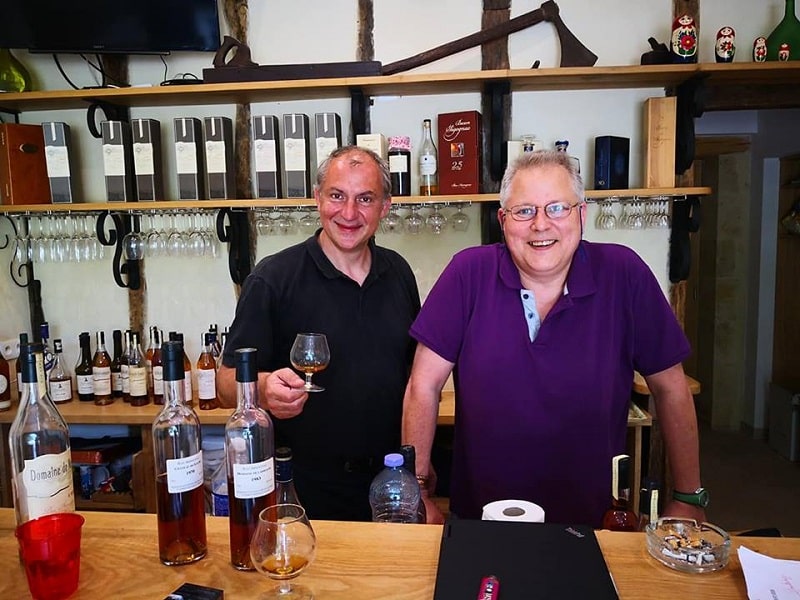
Château de Bordeneuve is also your family home – what’s it like living in such a magical place?
Thomas: Château de Bordeneuve is, above all, a haven of calm and tranquility. The château itself, with its understated appearance, communes in perfect harmony with the surrounding nature and countryside. The grand wooded parklands in which it is nestled afford the château a mysterious and noble air; even the cotton-wool clouds are happy!
Growing up in such surroundings is a privilege for any child: myriad places to build huts, treehouses and in which to daydream, communing with nature, watching the intrinsic wildlife roaming in perfect safety… It’s a magically serene environment, which stimulates reflection and, indubitably, taught me humility.
Total symbiosis between nature and the annual growing cycle: freely flowing grape juice for weeks on end, picking mushrooms, blackberries and other wild fruit, jam making and preserving the generous excesses of Nature.
Can you tell us the legend of the Baron de Sigognac’s clocks?
Thomas: The legend dates back to the 1640s. Whilst perfecting his ageing techniques, the Baron had clocks fashioned with hands which counted in years, decades and centuries. He came to realise that even these clocks were of little or no help in judging the ageing process of Armagnac: it is ready when it is ready – one cannot time a vintage Armagnac! These are precepts to which we adhere even today.
Tell us about the terroir.
Thomas: The domain is situated on 42 hectares of prime Bas-Armagnac terroir, nestled in the gently rolling countryside surrounding the Roman town of Eauze, the capital of Armagnac. The tawny-sandy soils, coupled with a micro-climate specific to our domain, favour the Baco and Ugni Blanc grape varietals, in turn, facilitating the distillation of consistently fruit-driven Bas-Armagnacs with soft, mellifluous alcohol contents and long, delightful finishes.

The architecture at Château de Bordeneuve is particularly interesting, as it is composed of buildings constructed in different eras. The oldest standing building, which houses the beaten earth cellars, dates to the Middle Ages and has walls that are 110cm thick; typical of 14th-century construction. This building was extended in the 17th century and today, houses both our principal cellar and the distillery.
The actual château, as a residence, was constructed at the start of the 18th century on vestigial foundations and comprises a vast cellar and three levels on 600m². At the start of the 19th century, a second home was constructed. We have recently completed renovation of this lovely little property, which is now a gîte for visitors.
Original harvest record books, dating between 1825 and 1836, confirm the polycultural nature of the domain at that time, with vines, wines, Armagnac, wood-cutting, cereals and milk production being the principal activities.
It is in 1980, thanks to the perfectly suited terroir and the success that we had so far encountered, that we turned the domain over exclusively to the production of our world-famous Armagnacs.
Talk us through the process, from picking the grapes to distillation to ageing in the cellars.
Thomas: We execute exhaustive controls from soil to bottle; each step and process is perfectly mastered, thanks to the art and ‘savoir-faire’ accrued through the generations. The grapes are grown using minimum intervention (lutte raisonnée) and harvested as early as possible to maintain natural acidity and low sugar content in the grapes, characteristics which, through experience, produce the most noble Armagnacs and exceptional vintages. Fermentation of the pressed juice is undertaken without the addition of yeast, using only those natural yeasts found on the grape skins. Fermentation is a short process, as we find that 7-8% alcohol content in the wine is perfect for distilling Armagnac of character and depth.
The distillation process is a continuous one: once lit, the still is active 24 hours a day, seven days a week, until all the juice from our vines has been distilled. We distill the juice only once; a process that is particular to Armagnac and which guarantees a maximum of fruit flavours in the finished product. In general terms, the more a product is distilled, the less intrinsic flavour is left at the end.
Armagnac is all about celebrating the fruit. The Armagnac is distilled to 56% (a relatively low alcohol percentage for a distillate). Again, this ensures that the finished product has a maximum of fruit and, equally importantly, eliminates any bitterness or over-powering alcohol presence. The distilled eau-de-vie is totally natural, 100% pure and free of any addition.
This freshly distilled Armagnac, which is called ‘Blanche’, is transferred directly into new French oak barrels that are constructed and toasted (burning of the inside of the barrels), to our own specifications and then moved the short distance to the adjoining cellars, to commence the long ageing process.
Tell us about your alembic still – how come it’s rare for estates to have their own?
Thomas: Our alembic still dates to 1921 and is made of pure copper. It has 10 plates in the distillation column. Each plate is almost like a mini-distillation, intensifying the inherent flavours as the eau-de-vie bubbles up through the column.
The still currently operates on gas for more technical precision, although it can still be used with wood. It employs a simple but highly effective heat transfer process for the cooling process: the hot vapours descend serpentine tubes snaked around another set of copper pipes which deliver the fermented juice to the still. As such, the vapours transfer heat to the juice (reducing the heating time) and the ascending wine cools down the vapours, avoiding the need for an external source of water for cooling – both economic and environmentally friendly!
There are two main reasons why few estates have their own alembic still: 1. Polyculture: most estates and domains make wine, Armagnac, Floc and grow other crops. As such, they do not specialise in purely Armagnac production and the purchase, maintenance and time involved in employing an in-house still are therefore, preclusive. 2. It is easier and unquestionably more practical for a farm/estate, to use the services of the ambulatory stills in the region, whereby distillation of the fermented juice has its own service industry and the still is booked on one or two days up to a week, depending on quantities.
For domains such as our own, which specialise purely in the production of craft estate Armagnac, ownership of a still is primordial, as it is essential to total mastery of production; choice of dates and times for early distillation (a mark of quality), control of heat, flow, maintenance and, importantly, a final stamp in the production process of a truly craft distillation.
What is your oldest vintage?
Thomas: Commercially, 1830. We may have even older vintages secreted away but that would be telling!
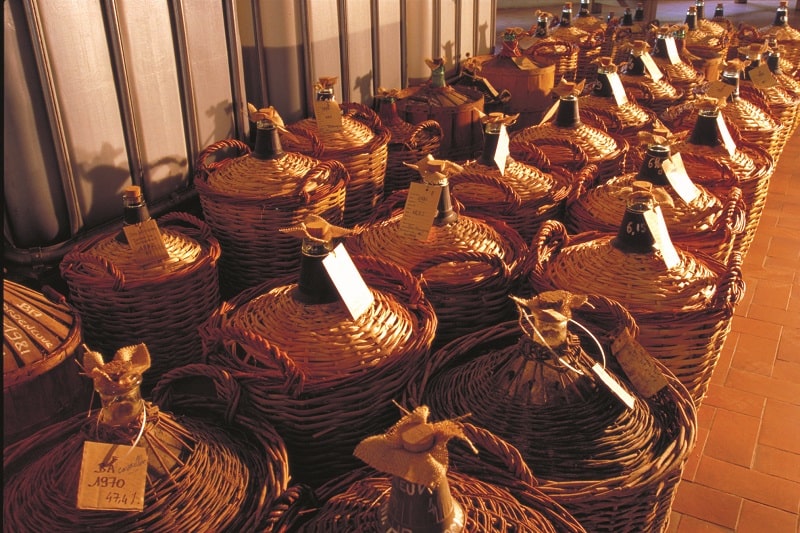
How old is the oldest one you’ve tasted personally – and what was it like?
Jérôme: I have been lucky enough to partake of an 1830 vintage. A reverential experience if you bear in mind that it was distilled in the same year that the world’s first steam-powered intercity passenger service opened between Liverpool and Manchester! It was rich and unctuous with lovely layers of stewed fruit flavours and sweet notes of gentle spice on a long and complex finish – unforgettable!
Thomas: In 1998, I wished to celebrate the signing of a particularly important order for our company. I opened a bottle of 1811 with a dozen (very) close friends. Although the label was illegible, the wax seal bore testament to its provenance. It was an astounding elixir: perfectly conserved, incredibly delicate and deeply rich, with its pronounced aromas of cinnamon and cracked black pepper overlying crystallised tropical fruit. Absolutely no regrets for opening such a rarity, even though the bottle did not last the evening!
Gin has had a renaissance – do you think it’s the turn of brandy to catch the imagination of the younger generation?
Jérôme: As for so many subjects, alcohol fashion is cyclical and an ‘in’ period for a category is determined purely by the attention span of the current consumer market. Armagnac is substantially older than almost all other spirits, with written records dating back to 1310 and production estimated some 200 years prior to that date. It has without doubt been re-born several times during that period!
However, we are talking specifically about the blended spirit market here (Armagnac vintages never go out of fashion). Armagnac is, effectively, living a renaissance in consumer interest, particularly amongst the younger generation, who are increasingly looking for two elements: 1) Interesting things to do with cocktails, 2) Authentic and natural craft production.
Happily, our own production meets these criteria and so we are seeing increasing demand from the younger generation, who, interestingly, also represent the future vintage markets.
Describe the perfect setting in which to enjoy your Armagnac.
Thomas: A difficult one to answer, given just how flexible is Gascony Gold! However, to celebrate its natural conviviality, the very best setting is with close friends and family, either as an aperitif in long drinks and cocktails or as a digestive with a decent cup of arabica, to round off a fine meal.
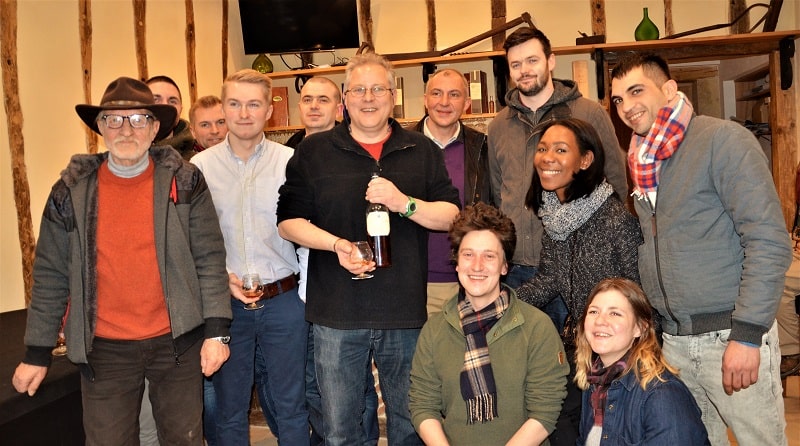
How should you drink Armagnac?
Thomas: Although, as with all alcoholic drinks, there are recommendations as to how to consume Armagnac, the best advice is to drink it in the way that affords you the most pleasure. Everything else is simply other people’s opinions.
However, convention suggests as follows:
- As a digestif after a meal, in front of a roaring fire, in your flask during a rugby match or comfortably installed in ‘The’ red leather chair.
- More modern: as an aperitif (Vs or VSOP), with or without ice
- Fun: in a multitude of simple or more complex cocktails
- Vintage: for a moment of sacred, pure indulgence
- Cooking: maceration and steeping, cake batters, flambees, apple pies, sauces and the chef’s tipple!
What flavours and aromas should people look out for in a Baron de Sigognac?
Thomas: This is another difficult question to answer precisely, as everyone’s palate differs, and we also have over 110 different Armagnacs in the Baron de Sigognac collection alone. That said, the central focus is the fruit, whether it be mellifluous tropical fruit flavours in the blends or rich stewed plums in the aged vintages.
The barrel ageing also brings notable elements of spices and vanilla, along with lovely notes of grilled nuts, roasted coffee beans and dark chocolate. The characteristics of Baron de Sigognac are its roundness and fruit presence, married with supple structure and incredibly long finishes.
If someone is looking to try Armagnac for the first time, what would you recommend?
Thomas: As with all things, it is best that one’s first experience be with the most approachable Armagnac. In this instance, the VS or *** (3-star).
For our Baron de Sigognac VS, the focus is particularly about the fruit (it is, after all, made from grapes), with a total absence of aggressive alcohol presence and great length: hopefully, just the right combination to pique one’s continued interest. We are immensely proud of our VS and, it being so often the first experience of Armagnac, we pay a huge amount of attention to each small batch that we hand-blend. Of course, the alternative first approach to Armagnac, is through its growing cocktail presence and subsequent library of simple to complex recipes.
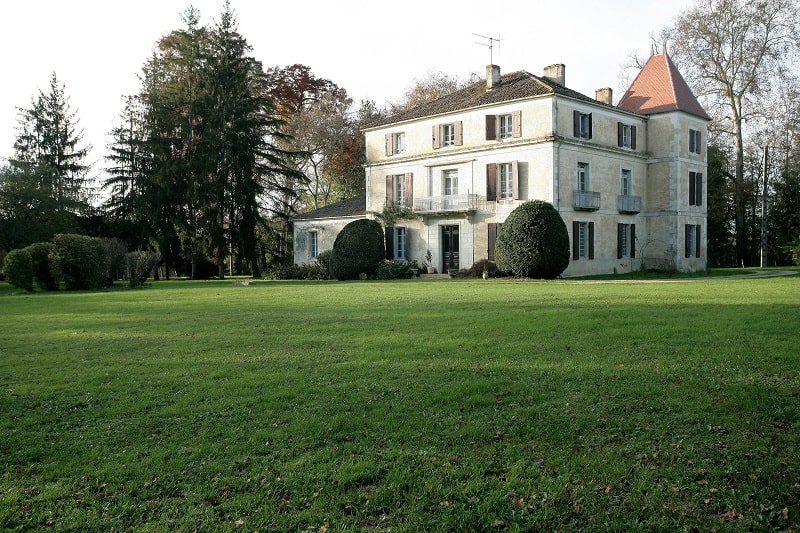
What does the future hold for the estate, both in this coming year and thereafter?
Jérôme: We hope to continue our expansion in the SE Asia markets with our close partners and new contacts. We are supporting several initiatives made by our partners and clients; for example, the first Armagnac bar in SE Asia, for which we are the principal supplier or a consumer education drive in Poland, where Armagnac is just starting to ruffle a few feathers…
We will continue to add to the Baron de Sigognac collection, responding to the demands of the modern market with new qualities of blends, such as 3, 8- and 12-Year Olds. We hope to expand our international sphere of influence in the genre and build on recent communication successes accrued over the past 5 years, with particular attention being paid to the galloping cocktail markets.
Can people come and visit?
Thomas: Absolutely! We love to receive visitors, private or professional, at Château de Bordeneuve. Your readers simply need to let us know when they would like to visit and we will be delighted to show them around the estate and, it goes without saying, have them sample our craft Armagnacs!
We look forward to seeing you soon!
https://www.chateau-bordeneuve.com/?lang=en
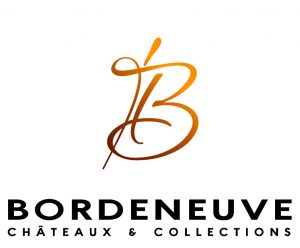
Award-winning Baron de Sigognac craft Armagnacs are available in reputable outlets such as Harrods, Fortnum & Masons and Selfridges in the UK and similar establishments in over 45 countries around the world. From the fresh and supple VS, perfect for those new to the joys of Armagnac, to the 10 Year Old; precocious enough to merit its place in a powerful, alcoholic cocktail yet nevertheless a standalone Armagnac well-suited to large balloon glassfuls and a few moments of guiltless pleasure; to the superlative 20 Year Old – for the connoisseur! Visit our website to discover our range and choose the Armagnac to suit your palate or click the links below to discover:
VS / *** – 3 years ageing in oak casks. Pale yellow in colour. A rich and fine nose: aromas of quince, fresh plums and hints of vanilla. Supple and elegant in the mouth, with a fresh and fruity finish. €30.00
10 Year Old – Amber colour with mahogany highlights. Fine nose, marked by notes of vanilla, cinnamon and candied orange. Lots of roundness in the mouth with floral, woody and spicy notes leading to a long and pleasing finish of grilled almonds and vanilla. €44.00
20 Year Old – Amber colour. Fine and fruity nose. Flavours of prune and vanilla. Round in the mouth with good balance and a lovely finish of candied fruit and light wood. €76.00
Share to: Facebook Twitter LinkedIn Email
More in Armagnac, Bardon de Sigognac Armagnac, Disillery, Interview

